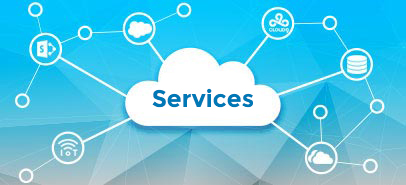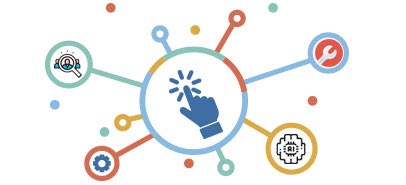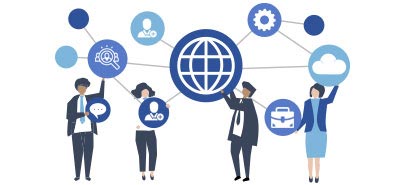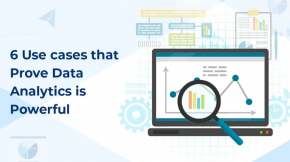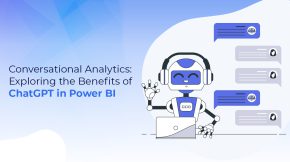Generative AI Implementation: A Practical Guide for Your Business
Are you struggling with repetitive tasks?
Slow decision-making?
Or difficulty creating personalized customer experiences?
These are common problems that generative AI can solve. Let’s explore how to implement generative AI to unlock new levels of efficiency, innovation, and growth in your business.
Why Implement Generative AI?
The benefits of implementing generative AI are huge. Imagine:
- Repetitive tasks being done automatically.
- Creating custom experiences for customers.
- Making smart decisions using data.
Generative AI can help you do all this. By understanding and using these technologies, you can make your operations better and stay ahead.
Implementing Generative AI A Framework
Before you start, it’s important to have a good generative AI implementation framework. This framework will guide you, making sure the process goes smoothly.
How to Implement Generative AI The Core Sections
Let’s look at the main areas to focus on for a successful generative AI implementation.
Multimodal AI Solutions More Than Just Text
What if your AI could understand more than just words? Multimodal AI solutions let you use different types of data, like text, images, and audio, for a better overall understanding.
How does this work?
Think of a customer service chatbot. Instead of only answering text questions, it could:
→ Look at images of a product to better understand the customer’s problem.
Or, imagine an AI system that can make marketing content by:
→ Combining text with relevant pictures.
What are the benefits?
- Better understanding: Combining data gives AI models a richer context.
- Improved accuracy: Considering multiple sources helps AI make better predictions.
- More engaging experiences: Multimodal AI can create more personal experiences for customers.
Real-Time AI Processing Why It’s Needed
What if you could have insights immediately instead of waiting? Real-time AI processing lets you analyze data and respond to events as they happen.
What does this mean for your business?
Think about a fraud detection system. Analyzing transaction data instantly can help you:
→ Find and stop fraud before it causes damage.
Or, consider a supply chain system that can quickly adjust to changing demands.
What are the key advantages?
- Immediate insights: Get quick access to important information for faster decisions.
- Proactive responses: React to changes and events as they happen.
- Improved efficiency: Automate tasks that need immediate attention.
Edge AI Deployment Bringing AI Closer
What if you could process data where it’s created? Edge AI deployment brings AI processing closer to the source, which reduces delays and improves efficiency.
How can this help your business?
Imagine a factory with sensors collecting data on equipment. With edge AI, you can:
→ Analyze this data on-site and find potential problems before they cause downtime.
Or, think about self-driving cars that need to process sensor data instantly for safe driving.
What are the main benefits?
- Reduced delays: Process data locally for faster responses.
- Enhanced privacy: Keep sensitive data on-site, reducing risks.
- Improved reliability: Operate even without a strong internet connection.
AI-Powered Decision Support Helping You Decide
What if you had an AI assistant to help you make better choices? AI-powered decision support systems analyze data and give insights to guide your decisions.
How can this transform your business?
Think about a marketing team trying to find the best ways to reach their audience. An AI system could:
→ Analyze customer data and suggest the most effective strategies.
Or, imagine a financial analyst using AI to find investment opportunities and manage risk.
What are the key advantages?
- Data-driven insights: Make informed decisions based on data analysis.
- Improved accuracy: Reduce mistakes in your decision-making.
- Increased efficiency: Save time by automating data analysis.
Generative AI Implementation for ERP
Have you thought about how generative AI can change your Enterprise Resource Planning (ERP) systems? It’s time to look at how generative AI implementation in ERP can help with predictive analytics, workflow automation, and smart reporting.
What’s GenAI’s role in ERP?
Generative AI can:
→ Analyze lots of data to predict trends.
→ Automate workflows.
→ Provide helpful reports.
This leads to better decisions and improved operations.
How can you put GenAI in your ERP system?
Start by finding areas where AI can add the most value. Think about using AI for:
- Demand forecasting.
- Inventory management.
- Supply chain improvements.
Where does Business Central fit?
If you use Microsoft Dynamics 365 Business Central, you’re in luck! Business Central works well with AI tools. We at Beyond Key offer GenAI-powered ERP solutions with Business Central. Check out our Business Central Consulting services to learn more.
Using Natural Language Processing
How can you make your AI understand human language? With Natural Language Processing (NLP), you can create AI applications that understand and generate human-like text.
What can NLP do?
NLP enables:
- Text generation.
- Sentiment analysis.
- Chatbot interaction.
- Language translation.
This lets you create AI systems that can communicate well with customers and employees.
How can you use NLP in your implementation?
Consider using NLP to:
→ Automate customer service.
→ Generate marketing content.
→ Translate documents.
Machine Learning for Content Generation
What if you could generate content automatically? Machine learning makes it easier to create AI model-driven solutions for various needs.
How does machine learning work?
Machine learning algorithms can be trained to generate:
This lets you automate the creation of marketing materials and product descriptions.
How can you apply it?
Explore using machine learning to:
→ Generate product recommendations.
→ Create social media content.
→ Automate training materials.
Deep Learning The Core of GenAI
How can you get insights from raw data? Deep learning lets you understand how to generate outputs when commanded, unlocking AI’s full potential.
What is it?
Deep learning uses complex neural networks to:
- Analyze data.
- Find patterns.
This lets you create AI systems that can recognize images and speech, and understand language.
How can you use it?
Consider using deep learning to:
→ Analyze customer data.
→ Find fraud patterns.
→ Improve manufacturing.
Data Collection and Annotation The Fuel
How can you make sure your AI models are accurate? Data annotation and collection involve adding metadata to raw information, helping the machine learn and recognize patterns.
What is data annotation?
Data annotation involves labeling data to provide context for AI models. This includes:
- Labeling images.
- Tagging text.
- Transcribing audio.
How can you improve the process?
Make sure your data is:
- Accurate.
- Consistent.
- Representative of the real-world situations your AI models will face.
Model Fine-Tuning Customizing AI
How can you tailor AI models? Pre-trained models can be fine-tuned to generate results for specific tasks, embedding knowledge into datasets.
What is model fine-tuning?
Model fine-tuning adapts a pre-trained AI model to a specific task. This lets you use the knowledge already in the model, saving time.
How can you fine-tune models?
Start by:
→ Selecting a pre-trained model that fits your task.
Then:
→ Train the model on data specific to your area.
Generative Models Translating Instructions
How can you create AI models that do many things? Generative models can translate into abilities, learning to perform tasks by taking instructions.
What are they?
Generative models are AI models that can generate new data similar to what they were trained on. This lets you create AI systems that can generate:
How can you use them?
Consider using generative models to:
→ Create marketing content.
→ Design products.
→ Generate simulations.
Transfer Learning Reusing Knowledge
How can you speed up training? Transfer learning reuses a model for a new task, helping train deep neural networks with less data.
What is transfer learning?
Transfer learning applies a model trained on one task to a related task. This lets you use the knowledge already in the model, saving time.
How can you apply it?
Consider using transfer learning to:
→ Adapt AI models to new areas.
→ Improve existing models.
→ Reduce the data needed to train new models.
Beyond Key’s Expertise
At Beyond Key, we know the potential of generative AI implementation. We offer consulting services to help you build and integrate AI solutions for your business. Our team uses the latest advancements in language models, natural language processing, and deep learning to change your business, offering efficiency.
Beyond Key specializes in custom solutions and transformative Microsoft technologies. With a focus on AI, we use Microsoft technologies, including SharePoint, Teams, Dynamics 365, and Power Platform (Power BI, Power Apps, and Power Automate).
Generative AI Consulting Services
Ready to explore AI? Our consulting services give you the guidance you need. We work with you to find opportunities, develop strategies, and create a plan for AI implementation.
Generative AI Powered Software Development
Want to turn ideas into reality? Our software development services help you use AI to create applications and web models. We use technologies like Vector embedding, RAG, and LLM models.
AI Chatbot Development
Ready to improve customer engagement? Our chatbot development services use models like OpenAI’s ChatGPT and Azure AI service to automate tasks and improve interactions.
LLM Based Application Development
Looking to build AI applications? Our LLM-based development services create solutions that can perform tasks like content generation and sentiment analysis.
Retrieval Augmented Generation (RAG) Systems
Need accurate outputs? Our RAG systems combine retrieval-based methods and generative models.
Fine-Tuning Models
Want to tailor AI models? Our fine-tuning services update models with data to adapt to specific tasks.
Generative AI Integration
Ready to integrate AI? Our integration services ensure AI solutions work with your infrastructure.
Upgrade and Maintenance
Need to keep AI solutions running? Our services provide updates to keep your AI models up-to-date.
Implementing generative AI can seem hard, but with the right approach, you can unlock its potential. By focusing on multimodal AI solutions, real-time AI processing, edge AI deployment, and AI-powered decision support, you can change your business.
Ready to explore what generative AI implementation can do for you? We invite you to request a demo with our experts at Beyond Key to see how we can help you reach your goals with AI.


